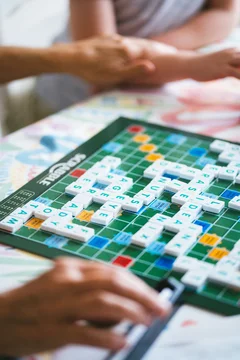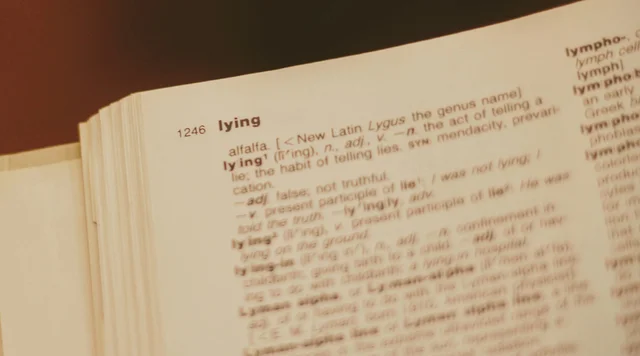
After we talked last week about an unsuccessful effort to bypass the Court's discovery dispute procedures, I thought it might be interesting to talk about what those procedures are, for people who don't practice here day in and day out.
A discovery dispute is a special procedure that allows the parties to receive a (relatively) quick hearing to resolve issues that arise during discovery. Bringing a discovery dispute is the only way the Court allows the parties to address these kinds of discovery issues in a typical District of Delaware case (including both patent and non-patent cases).
Is This in the Rules?
Discovery disputes are not mentioned in the local rules, but all of the judges have discovery dispute procedures in their form scheduling orders.
While the specifics vary, all of the judges require that the parties must be at an impasse on the issue, and that the parties have had at least one verbal meet-and-confer with Delaware counsel involved before they raise the issue with the Court.
Generally, after that, the procedures involve contacting the Court to initiate the dispute, filing concise letter briefs on the issues raised, and then attending a teleconference with the judge. The exact procedures are set out in the scheduling order in each case (but watch out for changes on the judges' websites).
The judges will sometimes resolve the disputes on the papers before the teleconference. If not, they'll typically issue a decision on the phone at the conference, or via an oral order on the docket shortly thereafter.
The total time to resolve a dispute is typically somewhere around a month or less, but it can vary depending on how busy the judges are. Generally you'll get a much faster result with a discovery dispute than you would with a motion (if a motion were even allowed).
What Issues Must Be Brought as a Discovery Dispute?
"Discovery" is usually interpreted broadly to include various issues that occur in the discovery phase of a case, including disputed extensions of discovery deadlines or the exclusion of late-disclosed positions, arguments, or expert opinions.
(There are some exceptions to this, such as Chief Judge Stark's separate procedures for motions to amend or strike. Visiting judges may also have different procedures.)
Certainly any motion to compel or motion for protective order in the District of Delaware should be brought as a discovery dispute, not a freestanding motion, unless you have a case before a visiting judge or otherwise have a scheduling order that lacks the discovery dispute language.
The parties can bring all of their present disputes at once, if ripe. If both parties bring issues, they will both file opening and answering letter briefs, with the party who has the burden on each issue going first.
It's not uncommon to see the parties have a number of issues (e.g., five or more) at the time relief is initially sought from the court, only to whittle those issues down, through compromise or otherwise, to just one or two before the dispute is heard. It's fine for the parties to present issues that go both ways, but make sure not to look like you were holding a discovery motion in your back pocket just to have something to argue.
Tips for Winning a Discovery Dispute Teleconference in the District of Delaware
Several of the judges have said that two of the keys to success at a discovery dispute hearing include presenting a clear identification of the relief you want—one sentence, ideally—and being the more reasonable party. It's not unusual to see a judge order relief that tracks a compromise position offered before the discovery dispute (note, however, that you can get yourself in trouble by offering a compromise for the first time on the call, without raising it beforehand).
Otherwise, keep your arguments short and to the point. If you are arguing about a failure to produce or respond to discovery requests, be sure to attach the relevant discovery requests and responses (e.g., objections) to your letters, and have the citations at the ready in the hearing.
Perhaps most importantly, don't bring trivial disputes or disputes you can't win. Think twice before you bring a dispute you're unlikely to win just to "flag the issue for the judge."
How Does the Actual Teleconference Usually Go?

The Court typically assigns one party to distribute a dial-in number before the conference (although lately the Court sometimes uses its own dial-in numbers).
If the parties are the ones organizing the call, then five to ten minutes before the conference, counsel for each side should dial in and identify themselves. At the scheduled time, Delaware counsel will dial in the court, and then the hearing starts. Delaware counsel handles introductions, and the Court will ask counsel for the moving party to present their argument.
The teleconference is a formal proceeding with a court reporter present. Pre-COVID, the judges would sometimes schedule these as in-person conferences, but right now they are exclusively teleconferences.
Unlike motion hearings, these are not typically held by video conference, and parties do not normally use PowerPoint presentations or demonstratives. The idea is to keep the hearing short and the issues relatively narrow.
In the teleconference itself, be sure to identify yourself before speaking. Be careful not to talk over other counsel, and do not—do not—talk over the judge.
Is the Hearing Public?
Yes and no.
No, in that, as a practical matter, the parties are the only ones with a dial-in, so no member of the public is able to participate.
But yes, the transcript will be public and will be available on the docket once the normal restrictions expire (assuming someone orders it).
Plus, keep in mind that the Court is trending more and more towards denying motions to redact transcripts. Anything you say may become public, even if both parties seek to keep it sealed. The Court is sometimes more lenient when it comes to third party information—but not always. Proceed with caution.
How many discovery disputes can you bring?
In the past, now-retired Judge Sleet limited parties to bringing three discovery disputes in patent cases before requiring them to seek leave. The current crop of judges have no such rules, but it is not hard to find statements in transcripts, oral orders, and published opinions—like Judge Connolly's opinion from last week—admonishing parties for bringing too many disputes.
And, in contentious cases, the judges have been willing to drop the hammer on parties who abuse the Court's procedures. Of course, the exact number may depend on the circumstances.
So the long answer is: only bring as many disputes as you need, after extensive efforts to compromise, keeping in mind the Court's limited time and busy docket. And the short answer is "as many as you dare."
If you enjoyed this post, consider subscribing to receive free e-mail updates about new posts.





